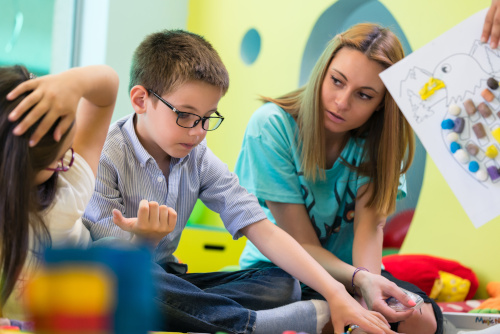
Staffing shortages continue to impact schools across the U.S., and vacancies are an increasingly common occurrence. Parents’ minds often jump first to teacher shortages, with significant numbers of teachers leaving schools in 2022 in search of less stressful work. But another essential role in schools is facing an equally urgent staffing crisis: paraprofessionals.
Paraprofessionals, also referred to as classroom aides or a primary support person (PSP), are the glue in the school day, supporting teachers in monitoring classroom activities and ensuring that all students are where they need to be. The Bureau of Labor Statistics estimates that there are greater than a million aides working in K-12 schools nationwide, with a meaningful subset focused on supporting special education delivery.
Paraprofessionals are particularly essential in special education. They’re an integral part of a team, working closely with clinicians—speech-language pathologists, occupational therapists, school psychologists—and students, both one-on-one and in small groups. They play a critical role in assisting the evaluation process on the student side, they document student behavior, and support assistive devices. In some circumstances, they may act as an extension of the hands of the clinician, helping to guide the student in various tasks.
With an increasing number of schools using teletherapy as part of their special education service delivery, the need for paraprofessionals is growing. Interactive online therapy generally relies on having a responsible adult onsite with the child to provide the appropriate level of support ranging from line-of-site supervision to 1:1 facilitation.
Critical shortage of paraprofessionals
Even as online student services continue to grow in most states, paraprofessionals available to help support the work are in very short supply. A Frontline Education survey in April 2021 cited 35 percent of districts found paraprofessionals among the hardest vacancies to fill.

